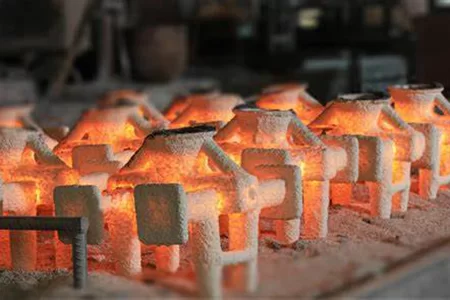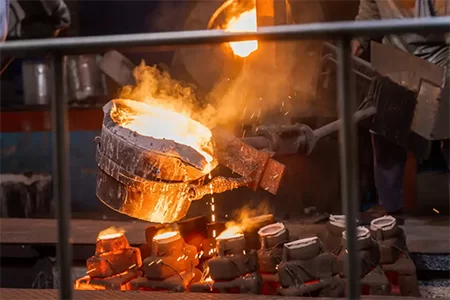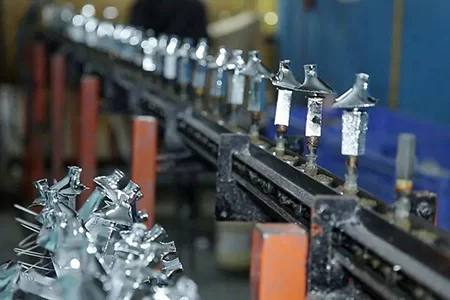
How to Compare Product Quality Between Different Casting Foundries?
-
Home>
-
Blog>
-
Technology>
How to Compare Product Quality Between Different Casting Foundries?
Introduction: Importance of Casting Quality
In the vast field of manufacturing, casting, as a basic and key process, plays a decisive role in the quality and performance of many products. Whether it is automotive parts, aerospace equipment, or daily mechanical equipment, the casting process plays an indispensable role in it. However, there are many foundries on the market, and their product quality is also uneven. For casting users, how to accurately compare the product quality between different foundries and select the partner that best suits their needs is a crucial and complex issue. This is not only related to the quality and stability of the purchased parts, but also directly affects the performance and market competitiveness of the final product.
Because the quality of casting products is so critical, it is particularly important to choose a foundry with excellent product quality. But among the many foundries, how to accurately compare their product quality? Next, let's explore this key issue in depth.
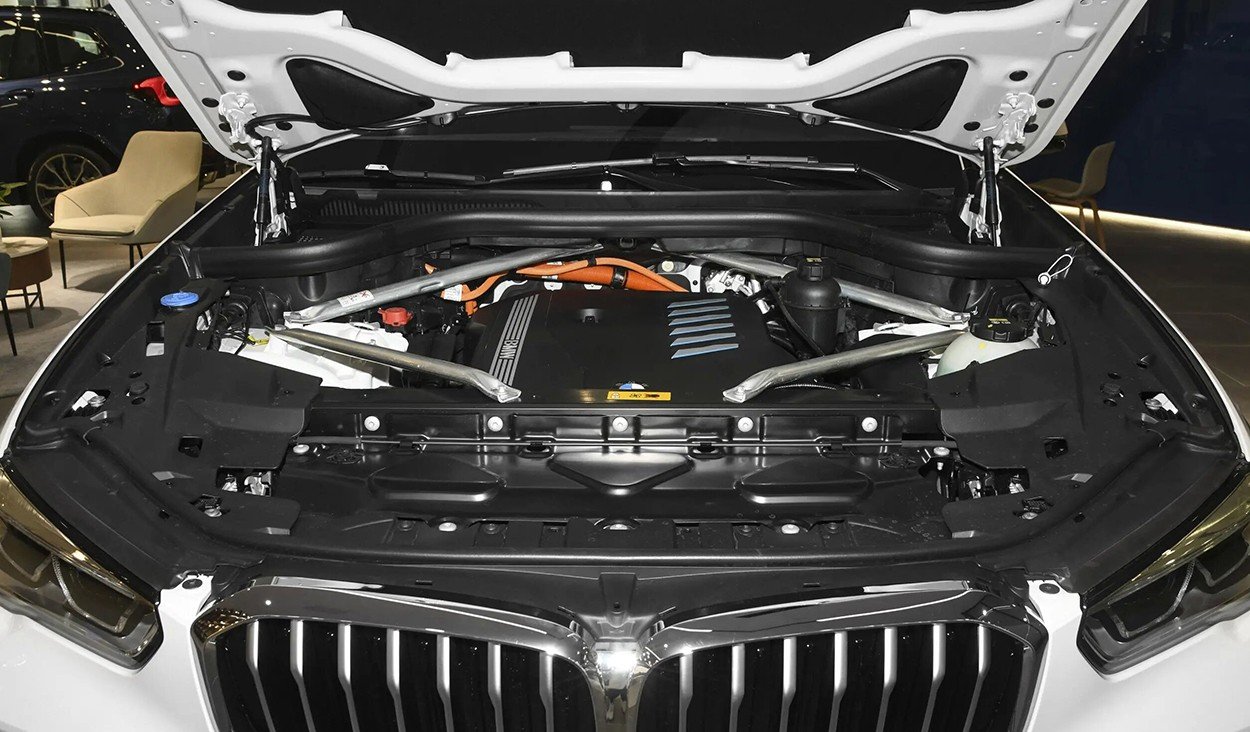
Appearance Quality
As the saying goes, "Detail decides success or failure". When comparing the quality of different casting foundries' products, appearance quality is the most intuitive entry point. When we get a casting product, the first thing that comes into view is its surface condition. An experienced quality controller can often see the manufacturer's process level and quality control capabilities from the subtle details of the casting surface.
High-quality castings should have a smooth and flat surface and a delicate touch, just like a carefully polished work of art. Castings with rough surfaces not only affect the appearance, but may also cause problems in subsequent use. For example, in the casting of the cylinder block of an automobile engine, if the surface is rough, it will increase the friction coefficient and reduce the working efficiency of the engine. At the same time, it may also cause uneven heat dissipation and affect the service life of the engine.
Defects such as sand holes, pores, cracks, and sticky sand are the biggest enemies of casting quality. Sand holes are holes formed after the molding sand is mixed with the molten metal during the casting process and cooled; pores are cavities left by the failure of gas to be discharged in time during the solidification of the molten metal; cracks may be caused by stress concentration or uneven cooling during the casting process; sticking sand is the adhesion of the molten metal and the molding sand, which causes a layer of sand particles to adhere to the surface of the casting. The existence of these defects will seriously weaken the strength and sealing of the casting and reduce its performance. Taking the blades of aircraft engines as an example, if there are sand holes or cracks, the blades may break under high-speed rotation and high temperature environment, causing serious flight accidents.
In the actual comparison process, we can use some simple tools, such as magnifying glasses, flashlights, etc., to carefully observe the surface of the casting. For some castings with complex shapes, non-destructive testing technologies, such as ultrasonic testing, X-ray testing, etc., can also be used to detect whether there are defects inside.

Dimensional Accuracy
In addition to appearance, dimensional accuracy is also a key indicator for measuring the quality of casting products. It is directly related to the adaptability and functionality of castings in subsequent assembly and use. In the field of mechanical manufacturing, many parts need to cooperate with each other to achieve specific functions, such as the piston and cylinder in the engine. Only when the dimensional accuracy of the two meets the design requirements can the normal operation of the engine be guaranteed.
When actually comparing the products of different casting foundries, we can use tools such as calipers, micrometers, and three-coordinate measuring machines to measure the size of castings. Calipers are a common measuring tool that can be used to measure length, inner diameter, outer diameter and other dimensions. They are easy to operate and relatively cheap, and can meet the general precision requirements. Micrometers are more precise, with a graduation value of up to 0.01mm, and are often used to measure dimensions with high precision requirements, such as the diameter of shaft parts. Taking the measurement of the diameter of shaft parts as an example, when using a micrometer, you need to first select a micrometer with a suitable range, then contact the surface of the shaft with the anvil and the micrometer screw, rotate the ratchet, and when the ratchet makes a "click" sound, you can read the measurement value.
For castings with complex shapes and extremely high precision requirements, three-coordinate measuring machines are the best choice. It can accurately measure the coordinates of the workpiece in three-dimensional space, and calculate the shape, size and position deviation of the workpiece by measuring multiple points. It is widely used in high-end fields such as aerospace and automobile manufacturing. In the detection of aircraft engine blades, the three-coordinate measuring instrument can quickly and accurately measure the key dimensions of the blade surface, blade tip clearance, etc. to ensure that the quality of the blade meets the design requirements.
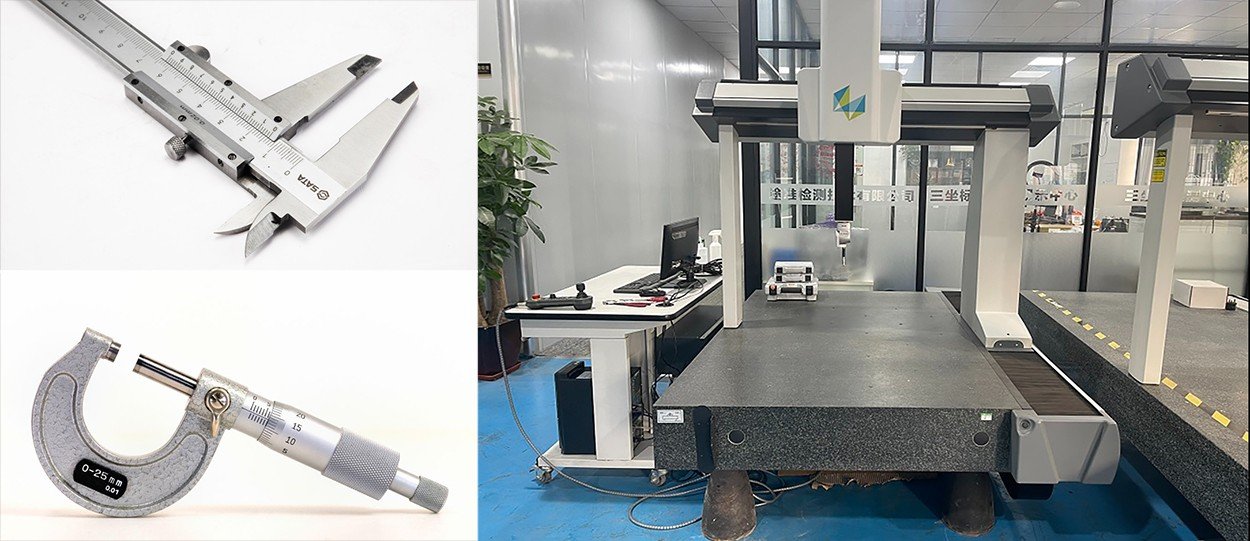
Through these tools, we can compare the actual size of the casting with the design size and calculate the dimensional deviation. Generally speaking, the smaller the dimensional deviation, the higher the production accuracy of the manufacturer and the more reliable the product quality. If the dimensional deviation exceeds the allowable range, the casting may not be assembled normally with other parts, affecting the performance of the entire product. In the manufacture of automotive transmission gears, if the dimensional accuracy of the gears is unqualified, it may cause poor gear meshing, noise, vibration and even damage.
Intrinsic Quality
Appearance quality and dimensional accuracy are important, but the intrinsic quality of casting products is the core factor that determines their performance and service life. Intrinsic quality covers many key aspects such as chemical composition, metallographic structure, mechanical properties, etc., which we will discuss in depth below.
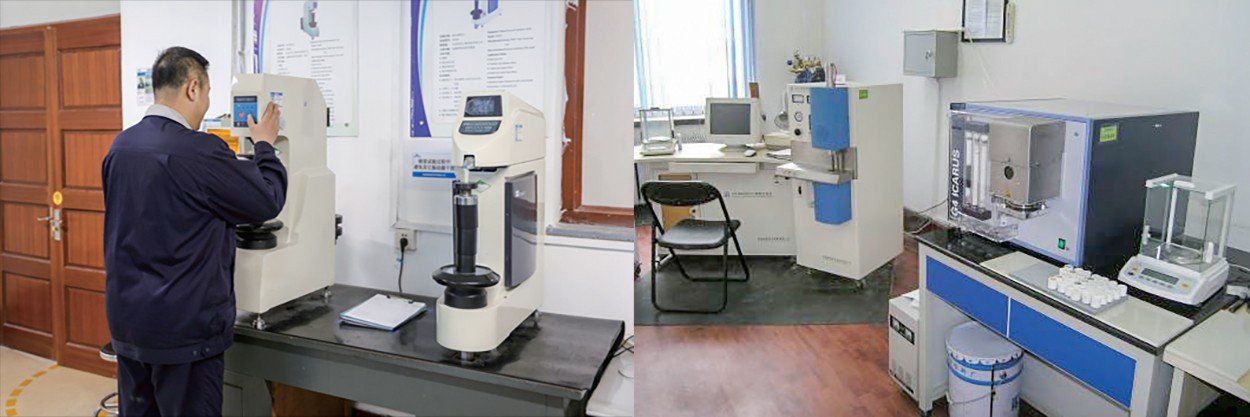
Chemical Composition Analysis
Chemical composition is the basis of casting performance, and different chemical compositions give castings different characteristics. Through spectral analysis, chemical titration and other methods, the chemical composition of castings can be accurately detected to determine whether they meet the standards and design requirements.
Spectral analysis is a commonly used detection method, and its principle is based on atomic emission spectroscopy (AES) technology. When a metal sample is subjected to high temperature from an excitation source (such as an arc, spark or laser), the atoms in the sample are excited to a higher energy level. When these atoms return to the ground state from the excited state, they release light of a specific wavelength, that is, characteristic spectral lines. Each element has its own unique characteristic spectral lines, so these spectral lines can be detected to determine the elements contained in the sample and their content. For example, in aluminum alloy castings, spectral analysis can accurately determine the content of elements such as aluminum, magnesium, and silicon, thereby determining whether the casting meets specific alloy standards.
Chemical titration uses chemical reactions to determine the content of a substance through a quantitative reaction between a titrant and the substance being tested. When detecting the carbon content in steel castings, the combustion-gas volume method can be used to burn the casting sample at high temperature to convert carbon into carbon dioxide gas, and then the carbon content is calculated by measuring the volume of carbon dioxide.
If the chemical composition of the casting does not meet the requirements, it will have a serious impact on its performance. In stainless steel castings, if the content of elements such as chromium and nickel is insufficient, the corrosion resistance of the casting will be greatly reduced, and it will be easy to rust and corrode in a humid or acidic or alkaline environment, shortening the service life of the product.
Observation of Metallographic Structure
The metallographic structure is like a microscopic "fingerprint" of a casting, which reflects the internal structure formed during the solidification and cooling process of the casting. By observing the metallographic structure of the casting with a metallographic microscope, we can determine the grain size, shape, distribution, and whether there are defects such as inclusions and segregation.
Before observing the metallographic structure, a series of sample preparation work is required for the casting. The first is cutting. Select a representative part from the casting and use a cutting device to cut it into a sample of appropriate size; then grind it step by step with sandpaper of different grain sizes to make the sample surface flat and smooth; then polish it to remove the fine scratches produced during the grinding process so that the sample surface can achieve a mirror effect; finally, corrosion is performed. The polished sample is immersed in an appropriate corrosive agent to corrode its surface and show different grains and phases.
When the prepared sample is placed under a metallographic microscope for observation, we can see different metallographic structure morphologies. Small and uniform grains usually mean better mechanical properties, because small grains can increase the grain boundary area, hinder dislocation movement, and thus improve the strength and toughness of the material. Coarse grains may lead to a decrease in the performance of the casting, such as reduced strength and increased brittleness. During the observation process, it is also necessary to pay attention to whether there are inclusions and segregation phenomena. Inclusions refer to foreign impurities mixed into castings, such as sand particles, oxides, etc. These inclusions will reduce the strength and toughness of castings; segregation refers to the phenomenon of uneven distribution of chemical components in castings, which may lead to inconsistent performance of different parts of castings.
Taking ductile iron as an example, the size, shape and distribution of graphite balls in its metallographic structure have a great influence on the performance. If the graphite balls are small, round and evenly distributed, the mechanical properties of the casting will be better; on the contrary, if the graphite balls are coarse, irregular in shape or unevenly distributed, the strength and toughness of the casting will be affected.
Mechanical Property Test
Mechanical properties are key indicators to measure whether castings can meet actual use requirements, including strength, toughness, hardness, etc. Through tensile test, impact test, hardness test and other mechanical property test methods, the mechanical properties of castings can be comprehensively evaluated.
Tensile test is a common method for evaluating the strength of materials. The strength of the material is determined by applying tension to the material and measuring strain and stress under specific conditions. During the test, the testing machine applies force to the sample without impact at a specified strain rate or stress rate. The testing machine can automatically record and draw tensile force-elongation curves and stress-strain curves. Through these curves, we can obtain strength indicators such as yield strength, tensile strength, fracture strength, and fracture elongation of castings. In the casting of turbine blades of aircraft engines, tensile tests can ensure that the blades can withstand huge centrifugal forces without breaking at high temperatures and high speeds.
Impact tests are used to determine the ability of materials to resist impact loads. Common impact test methods include simply supported beam impact bending tests, such as Charpy impact tests. Place a notched specimen of a specified geometric shape between the two supports of the testing machine, with the notch facing away from the striking surface, break the specimen once with a pendulum, and measure the absorbed energy of the specimen. The higher the impact toughness value, the stronger the deformation and fracture resistance of the material under impact loads. In the casting of automotive safety parts such as bumpers and frames, impact tests are an important means of testing their safety, ensuring that they can effectively absorb energy during collisions and protect the safety of people in the car.
Hardness testing is a method to evaluate the material's ability to resist cutting and wear. Common hardness testing methods include Brinell hardness testing, Rockwell hardness testing, and Vickers hardness testing. The Brinell hardness test is to press a diamond, carbide or hard spherical object with a fixed pressure into the material surface, and then calculate the hardness value by measuring the size of the impression. This method is simple and fast and is widely used in hardness testing of materials such as cast iron. The Rockwell hardness test is to press a diamond cone head or a steel ball into the material surface, and then calculate the hardness value by measuring the depth of indentation. It is suitable for metal materials with higher hardness. The Vickers hardness test is to evaluate the hardness of the material by pressing the indenter from the material surface and measuring the indentation depth. It is suitable for materials that cannot be tested by Brinell and Rockwell hardness. In the casting of the guide rails of machine tools, hardness testing can ensure that the guide rail surface has sufficient hardness to resist long-term friction and wear, and ensure the accuracy and service life of the machine tool.
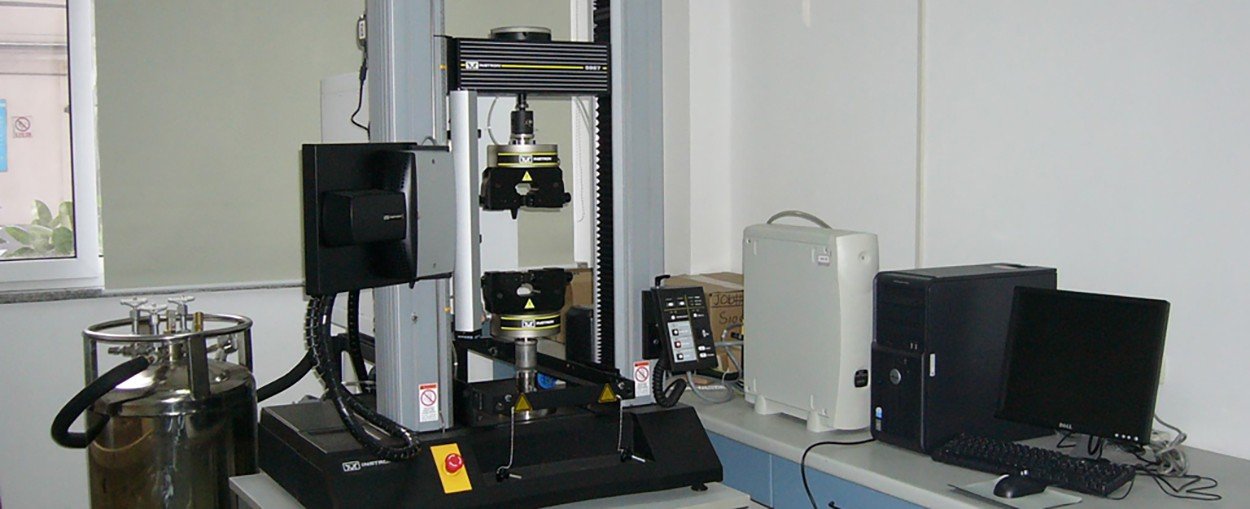
Production Process
Production process is a key factor affecting the quality of casting products. It runs through the entire production process, from the selection of raw materials to the molding of the final product. Each link has a vital impact on product quality. Advanced production technology can not only improve production efficiency, but also effectively improve the quality and performance of castings, so that they can better meet various complex use requirements.
Production Equipment & Technology
Advanced production equipment and technology are important guarantees for improving the quality of castings. In modern casting production, the application of automated production lines, advanced smelting equipment, precision mold manufacturing technology, etc. is becoming more and more extensive, and they provide strong support for the production of high-quality casting products.
Automated production lines can effectively reduce the impact of human factors on product quality and improve production stability and consistency. In the casting production of automobile engine cylinders, automated production lines can realize the whole process of automated operation from molding, pouring, cleaning to testing. Through precise program control, the production process of each cylinder can maintain a high degree of consistency, greatly improving the dimensional accuracy and surface quality of the product and reducing the scrap rate.
Advanced smelting equipment plays a key role in ensuring the chemical composition and intrinsic quality of castings. The medium frequency induction furnace is one of the commonly used smelting equipment. It has the advantages of fast smelting speed, precise temperature control, and uniform molten metal composition. By accurately controlling the smelting temperature and time, the gas and impurity content in the molten metal can be effectively reduced, and the purity of the casting can be improved. When producing aluminum alloy castings, the medium frequency induction furnace can control the temperature of the aluminum alloy liquid within ±5℃, ensuring the stability of the alloy composition, thereby improving the mechanical properties of the casting.
Precision mold manufacturing technology is also the key to improving the quality of castings. The accuracy of the mold directly affects the dimensional accuracy and surface quality of the casting. With the development of CNC machining technology, EDM technology, etc., the manufacturing accuracy of the mold has been greatly improved. In the precision casting of the aerospace field, the use of a five-axis linkage CNC machining center to manufacture the mold can achieve high-precision machining of complex mold shapes, so that the dimensional accuracy of the casting can reach within ±0.05mm, meeting the high-precision requirements of aerospace parts.

In addition, some emerging casting technologies, such as vacuum casting, semi-solid casting, 3D printing casting, etc., also provide new ways to improve the quality of castings. Vacuum casting technology can be used for casting in a vacuum environment, effectively reducing pores and inclusions in castings, improving the density and mechanical properties of castings, and is often used to manufacture key components of high-end automobile engines. Semi-solid casting technology uses the special rheological properties of metals in a semi-solid state for molding, which can produce castings with dense structure and excellent performance. It has broad application prospects in the production of light alloy castings such as aluminum alloys and magnesium alloys. 3D printing casting technology can directly print castings according to the design model without the need for molds, greatly shortening the product development cycle. At the same time, it can also realize the manufacture of complex structural castings, providing new opportunities for the innovative development of the casting industry.
Quality Control System
A perfect quality control system is an important means to ensure the quality of casting products. It can monitor the production process in all directions and throughout the process, timely discover and solve quality problems, and ensure that the quality of each production link meets the standard requirements.
The quality control system covers multiple key links such as raw material inspection, process inspection and finished product inspection. In the raw material inspection link, it is crucial to conduct strict quality inspection of each batch of raw materials. Taking the metal raw materials commonly used in casting as an example, its chemical composition needs to be accurately analyzed to ensure that the content of each element meets the standard. Through advanced technologies such as spectral analysis, it is possible to accurately detect whether there are impurity elements in the raw materials and whether the content of the main elements is within the specified range. At the same time, the physical properties of the raw materials, such as hardness and density, also need to be tested to ensure that they meet the requirements of the casting process. Only raw materials that have passed strict inspection and qualified can enter the production link, which lays a solid foundation for the subsequent production of high-quality castings.
Process inspection is to monitor each process in real time during the production process to ensure that the production process meets the process requirements. In the molding process, it is necessary to check the compactness, dimensional accuracy and surface quality of the sand mold to prevent problems such as loose sand mold and dimensional deviation, which affect the molding quality of the casting. In the smelting process, the temperature, chemical composition and smelting time of the molten metal need to be closely monitored to ensure the stability of the quality of the molten metal. In the pouring process, the pouring temperature, pouring speed and pouring amount must be controlled to avoid defects such as insufficient pouring and cold shut. Through strict inspection and control of these key processes, problems in the production process can be discovered and corrected in time to ensure the stability of the quality of castings.
Finished product inspection is the last checkpoint of quality control. It conducts comprehensive quality inspection on castings, including appearance quality, dimensional accuracy, internal quality and other aspects. In addition to the appearance inspection and dimensional measurement methods mentioned above, more in-depth inspection is required for internal quality. For example, ultrasonic flaw detectors are used to detect the inside of castings to find out whether there are defects such as cracks and pores inside; through metallographic analysis, the metallographic structure of castings is observed to determine its grain size, uniformity and whether there are abnormal structures, so as to evaluate the mechanical properties of castings. Only castings that pass comprehensive finished product inspections and meet quality standards in all indicators can be judged as qualified products and enter the market.
In order to ensure the effective operation of the quality control system, enterprises should also establish a sound quality management system and quality traceability system. The quality management system clarifies the responsibilities and powers of various departments and positions in quality control, standardizes the process and methods of quality control, and ensures that quality control work has rules to follow. The quality traceability system can record the production process information of each casting, including the source of raw materials, production equipment, production time, operators, etc. Once a quality problem is found, it can quickly trace the root cause of the problem and take appropriate measures to improve it.
The Credibility & Reputation of Foundries
The reputation and word of mouth of the foundry are like a mirror of product quality. It is not only a comprehensive evaluation of the manufacturer's products and services by customers, but also a valuable asset accumulated in the long-term market competition. A foundry with good reputation and good word of mouth often means the stability and reliability of its product quality.
Qualification Certification & Honors
Qualification certification is an important basis for measuring the strength of foundries and product quality. Among the many qualification certifications, ISO9001 quality management system certification is an internationally recognized quality management standard. It requires enterprises to establish a sound quality management system, covering the entire process from product design, raw material procurement, production process control to product delivery and after-sales service. Casting manufacturers that have passed ISO9001 certification indicate that they have a high level of quality management and can effectively ensure the stability and consistency of product quality. In the field of automotive parts casting, many well-known automobile manufacturers require their suppliers to pass ISO9001 certification to ensure that the quality of the castings supplied meets the strict standards of the automotive industry.
In addition, some industry-specific certifications are also of great significance. In the aerospace field, AS9100 aerospace quality management system certification is a rigorous test for casting manufacturers. It emphasizes the management of product safety, reliability and traceability in response to the special requirements of aerospace products. Manufacturers that have obtained this certification indicate that they have the ability to produce high-quality aerospace castings and can meet the extremely high requirements of the aerospace industry for product quality.

In addition to certification, the honors and awards received by foundries are also a reflection of their strength. For example, the title of "National High-tech Enterprise" means that the manufacturer has made remarkable achievements in technological innovation and R&D investment, and often has more advanced technology and processes, which can provide strong guarantees for product quality. Some foundries have won the Excellent Enterprise Award and Technology Innovation Award issued by industry associations for their outstanding performance in product quality, technological innovation, energy conservation and emission reduction. These honors are not only an affirmation of the manufacturer's past work, but also provide a reference for customers to choose.
Customer Reviews & Cases
Customer reviews are one of the most direct and authentic ways to understand the product quality of different foundries. We can collect customer reviews of manufacturers' products and services through channels such as the manufacturer's official website, e-commerce platforms, and industry forums. On e-commerce platforms, customers will make detailed reviews of the cast products they purchased, including product quality, appearance, dimensional accuracy, etc., and will also share their experiences and problems during use. Through these reviews, we can understand the actual performance of the product and the foundry's attitude and efficiency in handling customer feedback. If customers generally report that a foundry's castings have problems such as sand holes and dimensional deviations, and the foundry fails to solve them in a timely and effective manner, then the product quality of the foundry is questionable.
Customer cases are also an important way to demonstrate the strength of the foundry and product quality. A successful customer case not only reflects that the foundry can meet the specific needs of customers, but also proves the reliability and stability of its products in practical applications. In the field of rail transit, a foundry has provided key casting products to a well-known rail transit company, helping the company successfully complete several major projects. Through these cases, we can understand the foundry's capabilities in product design, production technology, quality control, etc., as well as the performance of its products under complex working conditions. We can also communicate with the customers in the case to obtain more detailed product usage and evaluation, so as to have a more comprehensive understanding of the foundry's product quality.
Industry Reputation & Credibility
In the foundry industry, the reputation and credibility of the foundry are also important factors affecting product quality evaluation. We can communicate with industry experts, peer companies, suppliers, etc. to understand their views and evaluations of different foundries. With their rich experience and professional knowledge, industry experts have an in-depth understanding of the technical level, product quality, development trends, etc. of each foundry, and their opinions have a high reference value. Peer companies will also pay attention to and understand each other. Through communication with peers, some internal information about other foundries can be obtained, such as production management, quality control, etc. Suppliers have a close cooperative relationship with foundry manufacturers. They have a better understanding of the manufacturer's raw material procurement, payment reputation, etc., and from the supplier's perspective, they can also understand the strength and reputation of the foundry.
Some industry media and associations will also evaluate and rank foundries. These rankings and evaluation results reflect the status and reputation of the foundry in the industry to a certain extent. For example, the "Annual Excellent Enterprise Ranking List of the Foundry Industry" will comprehensively consider the manufacturer's production scale, technological innovation capabilities, product quality, market share and other factors to select and rank foundries. In the quality evaluation activities organized by industry associations, foundries with outstanding performance will also receive corresponding honors and commendations. This information can help us understand the foundry's industry reputation and prestige.
Summary & Suggestions: Key Points for Choosing A High Quality Foundry
In modern industrial production, the quality of casting products is directly related to the performance, reliability and safety of the entire product, so it is crucial to choose a foundry with excellent product quality. Through the detailed description of the method of comparing the product quality of casting manufacturers in the previous article, we can summarize the following points:
In terms of appearance quality, carefully observe whether the surface of the casting is smooth and flat, and whether there are defects such as sand holes, pores, cracks, and sticky sand. These surface defects not only affect the aesthetics of the product, but are also likely to cause serious problems in subsequent use, such as reducing the strength and sealing of the product and affecting its service life. With the help of simple tools such as magnifying glasses and flashlights, we can help us find these subtle defects more clearly; for castings with complex shapes, non-destructive testing technology is an indispensable means of detection.
Dimensional accuracy is one of the important indicators for measuring the quality of casting products. It determines the adaptability and functionality of the casting in the subsequent assembly and use process. Use tools such as calipers, micrometers, and three-coordinate measuring machines to accurately measure the dimensions of the castings and compare them with the design dimensions to ensure that the dimensional deviation is within the allowable range. Minor dimensional deviations may cause the casting to not work properly with other parts, thus affecting the performance of the entire product.
Intrinsic quality is the core of casting product quality, including chemical composition, metallographic structure and mechanical properties. The chemical composition is detected by spectral analysis, chemical titration and other methods to ensure that it meets the standards and design requirements; the metallographic structure is observed by metallographic microscope to determine the grain size, shape, distribution and whether there are defects such as inclusions and segregation; through tensile test, impact test, hardness test and other mechanical property test methods, the strength, toughness, hardness and other mechanical properties of the casting are comprehensively evaluated. Only castings with excellent intrinsic quality can withstand various complex working conditions in actual use and ensure the reliability and stability of the product.
The production process has a profound impact on the quality of casting products. Advanced production equipment and technology, such as automated production lines, advanced smelting equipment, precision mold manufacturing technology and emerging casting technology, can effectively improve the quality and performance of castings. A complete quality control system, covering raw material inspection, process inspection and finished product inspection, can monitor the production process in an all-round and full-process manner, discover and solve quality problems in a timely manner, and ensure that the quality of each production link meets the standard requirements.
The credibility and reputation of the foundry are also factors that cannot be ignored when choosing a foundry. Qualification certification and honors are important manifestations of the manufacturer's strength and product quality, such as ISO9001 quality management system certification, industry-specific certification, and various honorary awards. Customer reviews and cases can give us a more intuitive understanding of the actual performance of the manufacturer's products and customer satisfaction, and through communication with customers, we can obtain more information about product quality and service. Industry reputation and reputation are accumulated in long-term market competition. By communicating with industry experts, peer companies, suppliers, etc., and paying attention to the evaluation rankings of industry media and associations, we can fully understand the status and reputation of the foundry in the industry.

When choosing a foundry, we should comprehensively consider all the above aspects and conduct a comprehensive and detailed comparative analysis. Don't just focus on price factors and ignore the importance of product quality. It is recommended that before choosing, collect more information from different foundries, conduct on-site inspections of the foundry's production facilities and quality control system, and communicate in depth with the foundry's technical staff and sales staff to understand its technical strength, production capacity and service level. At the same time, require the foundry to provide samples for testing and analysis, and judge the quality of its products through actual data.
Only by comparing the product quality of foundries through scientific and rigorous methods can we choose the high-quality foundry that best suits our needs, provide reliable casting products for industrial production, and promote the healthy development of the entire industry.
Article Navigation
Article Navigation
Industries
Foundries
-

March.10, 2025
Achieving Precision in Metal Casting: Key Strategies for High-Quality Casting Parts
READ MORE
-

March.03, 2025
Addressing Defects in Castings: A Comprehensive Guide
READ MORE
-

February.25, 2025
How to Compare Product Quality Between Different Casting Foundries?
READ MORE
-

February.14, 2025
What Are The Metal Casting Materials Commonly Used in Foundries?
READ MORE
-

January.20, 2025
Surface Treatments for Metals After Casting
READ MORE
-

November.18, 2024
What Should Casting Manufacturers Pay Attention to in Production Management?
READ MORE




